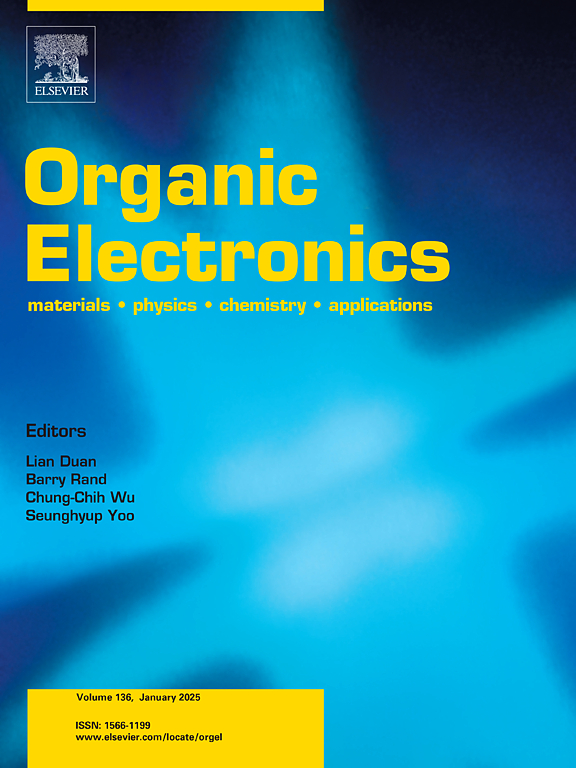Effect of various parameters on sorting semiconducting carbon nanotubes using polyfluorene for high-performance field-effect transistors
IF 2.6
4区 工程技术
Q3 MATERIALS SCIENCE, MULTIDISCIPLINARY
引用次数: 0
Abstract
High-purity, large-diameter (>1.1 nm) semiconducting single-walled carbon nanotubes (s-SWNTs) are required to fabricate high-performance field-effect transistors (FETs). In this study, we optimized the key parameters for s-SWNT sorting, including polymer concentration, sonication time, and temperature, to selectively achieve high-purity (>99 %) and large-diameter s-SWNTs suitable for advanced FET applications. These parameters strongly influence the absorbance, yield, and purity of the large-diameter s-SWNTs. Increasing polymer concentration enhanced the yield of s-SWNTs but reduced their purity, likely due to excessive polymer interactions with metallic SWNTs. In contrast, both the yield and purity improved with longer sonication times, with 2.5 h identified as the optimal duration to maximize de-bundling and minimize residual bundles. Shorter sonication times (1–1.5 h) resulted in lower purity due to insufficient de-bundling. The optimal sonication temperature was found to be 35 °C, balancing the thermodynamic and kinetic conditions for effective SWNT dispersion and polymer dissolution. The FETs with the s-SWNTs prepared under the optimal condition showed an ON/OFF ratio of 104 and an electron mobility of 43.6 cm2 V−1 s−1, which are high values reported for random network FETs with SWNTs.

用聚芴分选半导体碳纳米管制备高性能场效应晶体管
制备高性能场效应晶体管(fet)需要高纯度、大直径(>1.1 nm)半导体单壁碳纳米管(s-SWNTs)。在这项研究中,我们优化了s-SWNT分选的关键参数,包括聚合物浓度、超声时间和温度,以选择性地获得高纯度(> 99%)和大直径的s-SWNT,适合先进的FET应用。这些参数对大直径s- swcnts的吸光度、收率和纯度有很大影响。聚合物浓度的增加提高了s-SWNTs的产量,但降低了它们的纯度,这可能是由于聚合物与金属SWNTs的过度相互作用。相比之下,随着超声时间的延长,产率和纯度都有所提高,2.5 h被确定为最大限度地脱捆和最小限度地减少残余束的最佳时间。较短的超声时间(1-1.5 h)由于脱捆不足导致纯度降低。最佳超声温度为35°C,平衡了SWNT有效分散和聚合物溶解的热力学和动力学条件。在最佳条件下制备的s-SWNTs fet的ON/OFF比为104,电子迁移率为43.6 cm2 V−1 s−1,这是具有SWNTs的随机网络fet的高值。
本文章由计算机程序翻译,如有差异,请以英文原文为准。
求助全文
约1分钟内获得全文
求助全文
来源期刊

Organic Electronics
工程技术-材料科学:综合
CiteScore
6.60
自引率
6.20%
发文量
238
审稿时长
44 days
期刊介绍:
Organic Electronics is a journal whose primary interdisciplinary focus is on materials and phenomena related to organic devices such as light emitting diodes, thin film transistors, photovoltaic cells, sensors, memories, etc.
Papers suitable for publication in this journal cover such topics as photoconductive and electronic properties of organic materials, thin film structures and characterization in the context of organic devices, charge and exciton transport, organic electronic and optoelectronic devices.
 求助内容:
求助内容: 应助结果提醒方式:
应助结果提醒方式:


